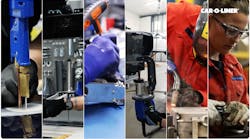Promising research results are indicating that the Russian Dandelion can become a commercially viable and renewable source of high quality tire-grade rubber.
Like this article? Sign up for our enews blasts here.
Bridgestone is among several collaborators taking part in a Russian Dandelion project being led by PENRA – the Program for Excellence in Natural Rubber Alternatives – at Ohio State University’s Ohio Agricultural Research and Development Center.
The tire maker’s specific role in the project is to scrutinize the performance of the natural rubber extracted from the plant, which differs from the Common Dandelion frequently found in lawns and gardens throughout the U.S.
“We know that there are more than 1,200 types of plants from which natural rubber could in theory be harvested, but finding one that could practically produce the quality and amount of rubber needed to meet the demands of today’s tire market is a challenge,” notes Dr. Hiroshi Mouri, president of the Bridgestone Americas Center for Research and Technology.
“Bridgestone continues to dedicate substantial resources to finding sustainable alternatives for the natural rubber needed to manufacture tires and other high-quality rubber products,” he says, “and we’re excited about this potentially game-changing discovery with the Russian Dandelion.”
Company subsidiaries will be conducting additional testing on Russian Dandelion-harvested natural rubber at technical labs in Akron and Tokyo this summer, with larger-scale testing to follow in 2014.
The development comes on the heels of a report in March outlining a project involving Guayule, a shrub native to the Southwestern U.S. and northern Mexico, as an alternative to natural rubber harvested from rubber trees, which are also known as Hevea trees. For that project, the tire maker is establishing a pilot farm and constructing a rubber process research center in the Southwest.
The Russian Dandelion and Guayule have almost identical qualities compared to natural rubber harvested from the Hevea tree, which is currently the primary source for the natural rubber used in tires.
For more information, visit www.bridgestone.com and www.oardc.osu.edu/penra.
Have articles like this sent to you weekly by signing up for our enews blasts here.

